Steps Toward a Successful Recruitment Process
Last Updated on August 31, 2024 / Recruitment

HR Question:
I understand that we’re living in a “candidate’s market,” which means I need to be both efficient and effective when recruiting for new talent. I want to know what best practices are to create a strong candidate and brand experience. What steps should I take to build a successful recruitment process?
HR Answer:
You’re right – today, businesses are operating in what’s called a “candidate’s market.” This means that job seekers have more opportunities and professional options to choose from. More importantly, though, it means that the top-tier candidates have the most leverage for the best opportunities. Secondly, it means that you can no longer use the same old hiring practices that you’ve used in the past when there were more candidates than there were jobs.
While the recruitment process may look different depending on factors such as business size, industry, or seniority of the position, some fundamental steps can be taken to help ensure a successful recruiting process.
Define the Position
The most successful recruiting efforts are built on clearly defined roles, which means creating (or updating) the job description for the role. You should meet with the relevant stakeholders (i.e., managers and peers) to understand which skills, tasks, and experiences are critical to the success of the position, and possibly missing from the team and organization, to update the job description.
Then, for clarity and effective candidate screening, a best practice can be to identify the top three to five skills or qualifications that are essential to the position (rather than providing an exhaustive list of potential needs) and build your job ad around those items.
The difference between job descriptions and job ads
It’s important to note that your job description and your job ad are not the same thing! Your job description should provide a detailed view of the job requirements, expectations, reporting structure, etc. Your job ad should give a brief overview of the position and highlight the most critical qualifications needed to be successful.
Your ad should also provide compelling reasons why candidates would love to work for your company. Remember, your job ad needs to be intriguing enough to potentially woo someone away from their current job. This is your chance to highlight why they should consider making that leap.
Another key task in these early stages is making sure that you have a clear description of the culture and what a “strong fit” may look like for the existing team. Be sure you understand your “need-to-have” qualities (such as the ability to pivot quickly or experience with certain software) versus “nice-to-have” qualities (i.e., it would be great if the candidate came with these skills, but I can teach them if they don’t).
When it comes time to put pen to paper (or fingers to keyboard), consider the following:
- Job ads should be easily read on a mobile device with minimal scrolling, as almost 70% of job seekers in 2021 applied via their mobile devices.
- Utilize catch statements at the beginning of the ad (i.e., are you looking for a fast-paced, creative environment?) that speak to the candidate you may be looking for.
- Use a short paragraph to summarize the major responsibilities of the position. No more than three to five sentences.
Post the Position
Once your job ad is written, it’s time to cast a wide net to attract a diverse candidate pool. Consider major job boards like Indeed, LinkedIn, and ZipRecruiter, as well as a number of free job boards, niche/industry-specific job boards, diversity job boards, and social media groups. Don’t forget to leverage your own network, including LinkedIn alumni groups and associations in the area you are recruiting in. Be sure to post it on your company’s career page too.
As you post the role, be sure to simplify the candidate’s ability to post/apply to positions. Remove any unnecessary steps that make the application process lengthy or complex, which may turn off the candidates from even applying in the first place.
If you use pre-screen questionnaires, make sure they are optimally designed and easy to complete. Wait until after initial conversations with a candidate before making them complete lengthy applications or assessments. This allows for an opportunity to “sell” the position and the employment brand of the company and to get the candidate interested in moving forward through those tasks.
Be Proactive!
In a tight candidate market, you may not want to solely rely on waiting for the candidate to come to you. Research organizations, social media outlets, or other networking options that are relevant to the position or company. Routinely connect with your network, share news, and let them know that you are hiring.
And if you are competing for the same candidates as other organizations, be ready to sell the candidate on why your company will be their best choice. This is not just a discussion of pay and benefits, but more about the culture, mission of the company, and potential career growth. So, if your organization does a great job of providing career paths and development opportunities, be proud of that, put that message first and foremost ahead of pay and benefits.
Focus on Candidate Experience!
As candidates come rolling in, you’ve reached a crucial time in a successful recruitment process – you need to make sure you’re reviewing and responding to candidates in a timely fashion. A best practice is responding to the candidate with an acknowledgment, if not the next steps, within one to two business days. This can be a simple email that thanks them for their interest and includes an explanation of what the next steps in the process will be. The candidate will appreciate the follow-up, which will also help protect the employment brand of your company.
Other best practices include:
- Utilizing readily available technology to find alternate ways to reach out to candidates. For example, texting can be an effective way of quickly getting in touch with candidates, as it boosts engagement and may cut down on the amount of time spent playing phone tag. This is especially true if your organization has a lot of high-volume recruiting.
- If you know that there will be multiple steps in the process, communicate that as early as possible. This also opens the door to encouraging the candidate to keep you informed as well should there be any developments in their current job search.
- Simplify the interview process as much as possible. Avoid having candidates come on-site multiple times for interviews by scheduling as much as necessary in one or two visits, max. Top-tier candidates are usually currently employed, which makes it very difficult for them to take time off to interview.
Be sure that your entire hiring team prioritizes the recruitment process and that they are actively involved in the hiring process so that you do not lose top talent to roadblocks caused solely by the hiring team. More often than not, your best candidates may come in the first round of resumes that you receive. Encourage anyone involved in the hiring process to keep this in mind as they recruit and to be timely in making decisions.
Thank you to Lisa Johnson, CIR and Samantha Kelly for contributing to this edition of our HR Question of the Week!
A successful recruitment process is much more than just posting an ad. It requires a targeted message, the right resources, and a significant amount of candidate engagement. Are you overwhelmed with your recruiting? Our on-demand recruitment services can give you the support you need no matter where you are in the process. Visit our Outsourced Recruitment page to learn more, or contact us today!






